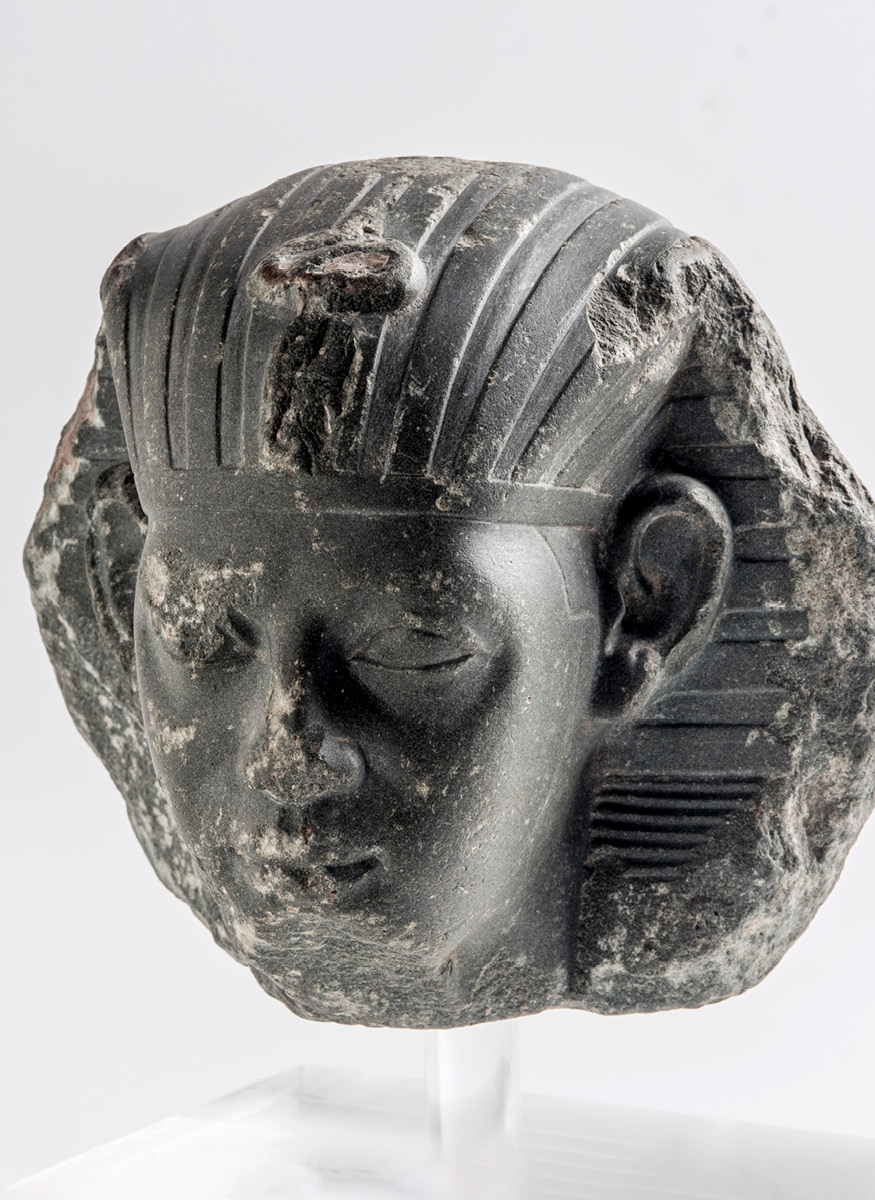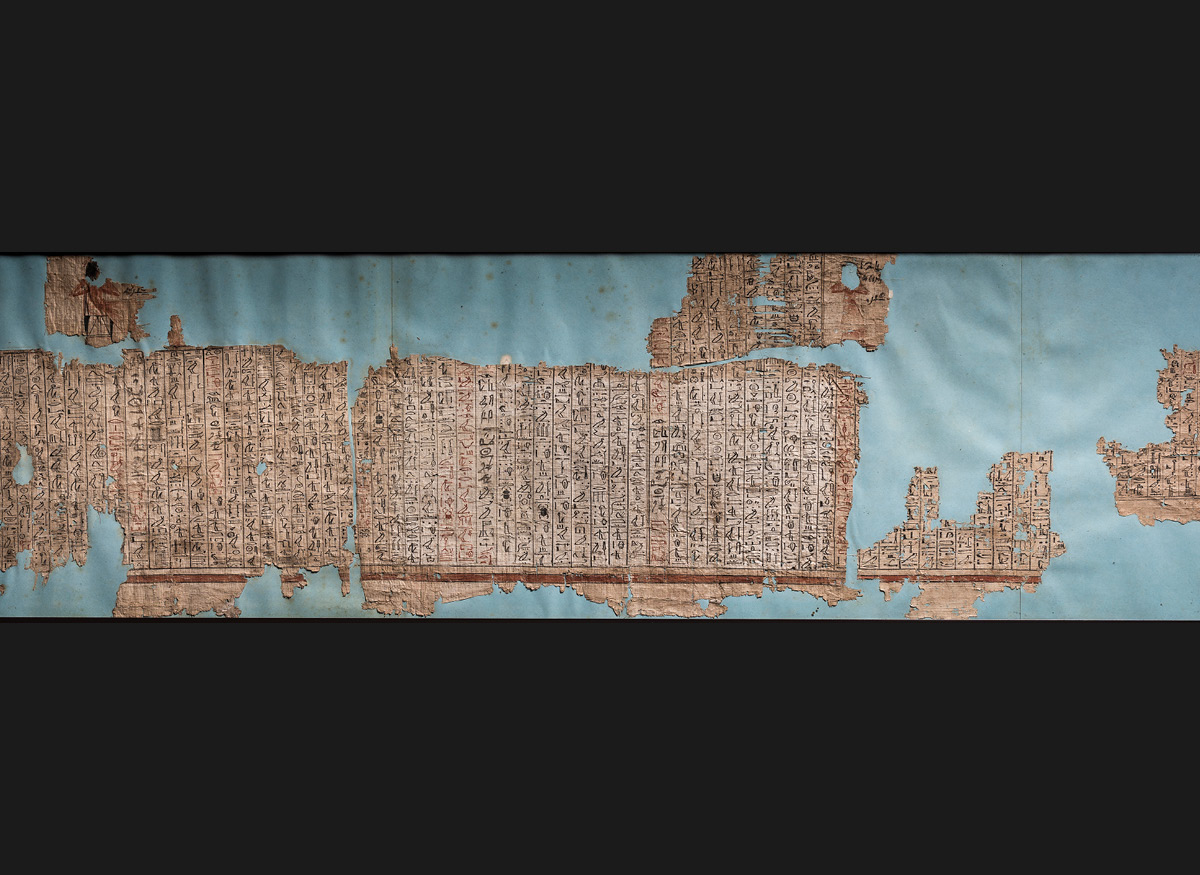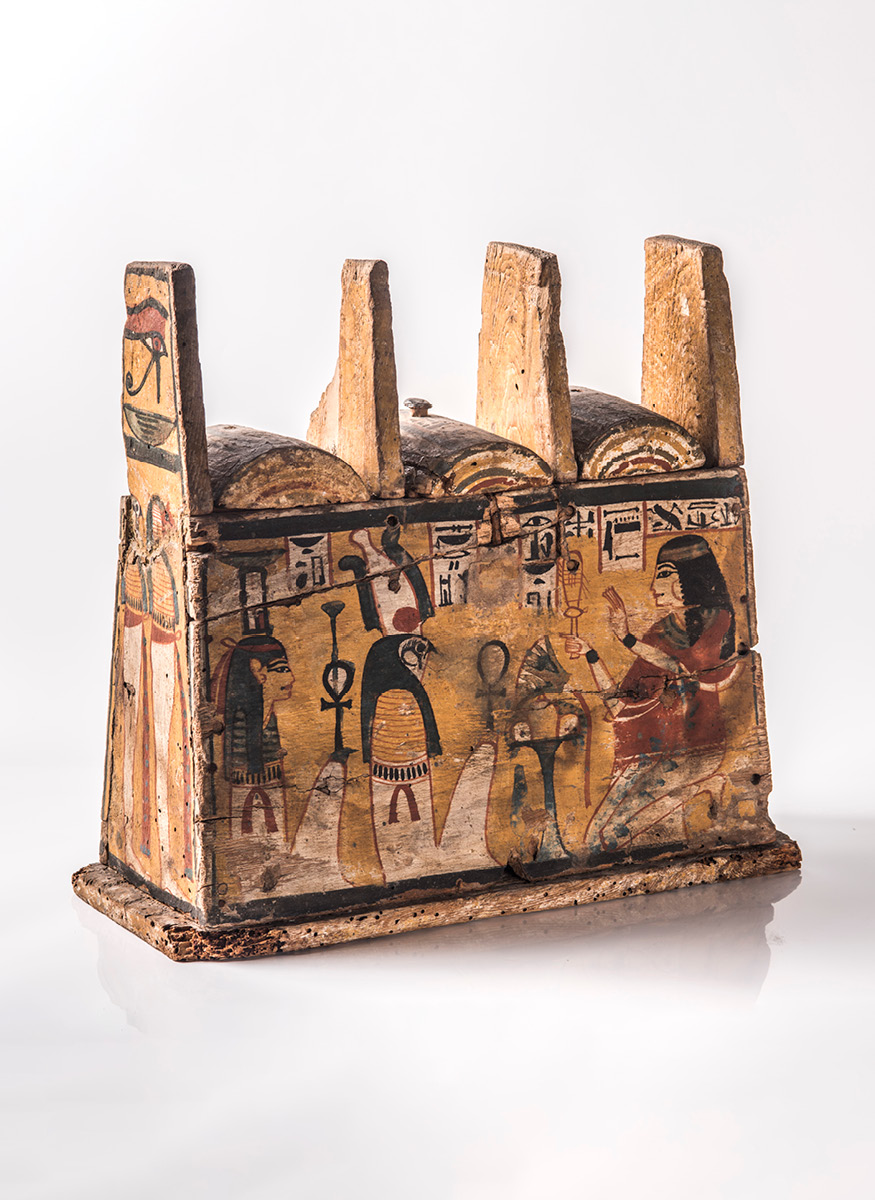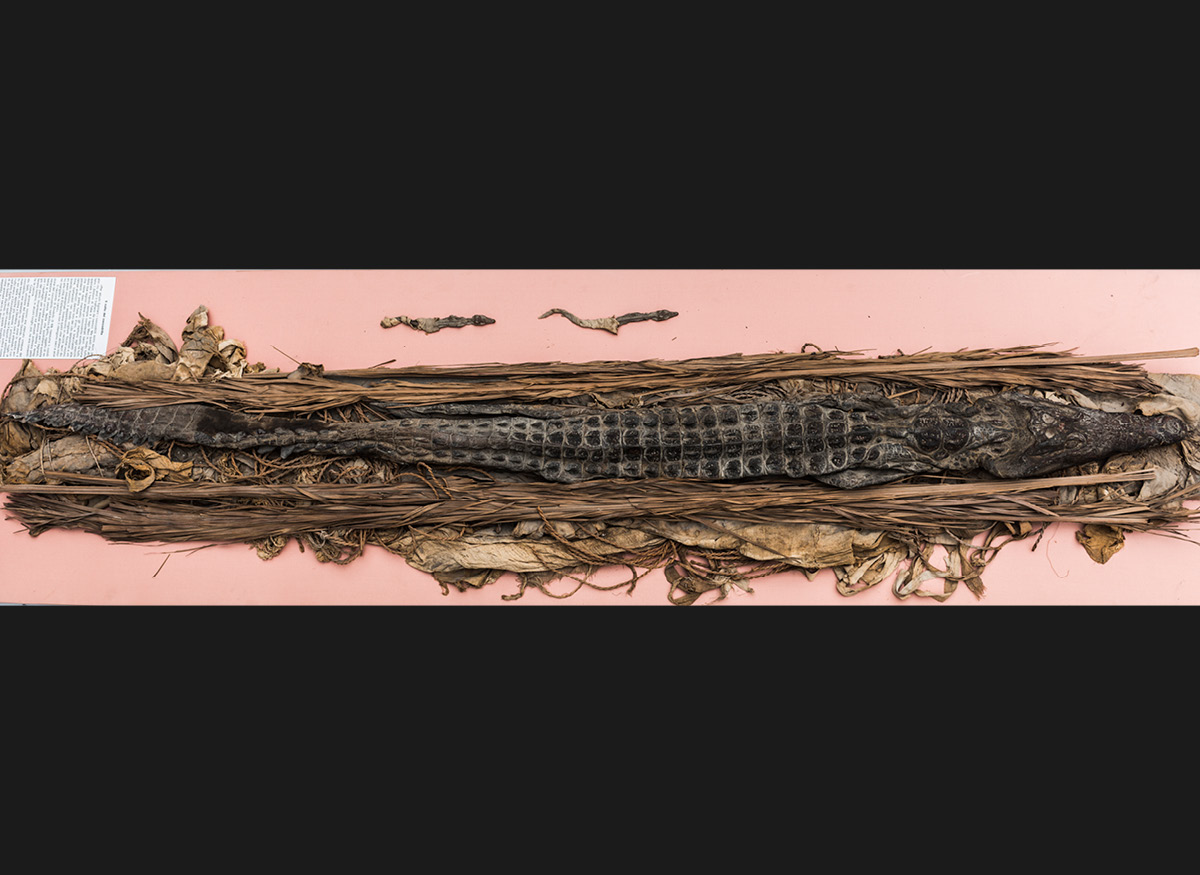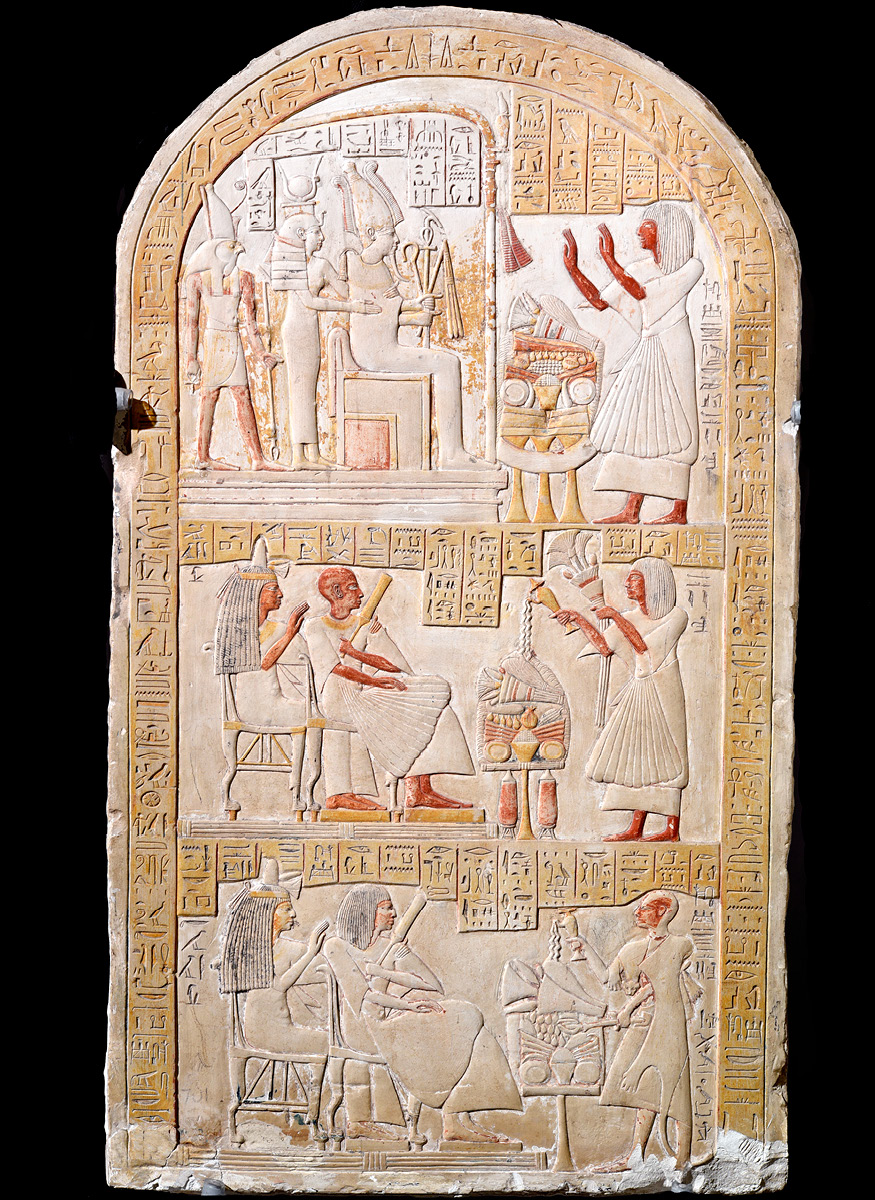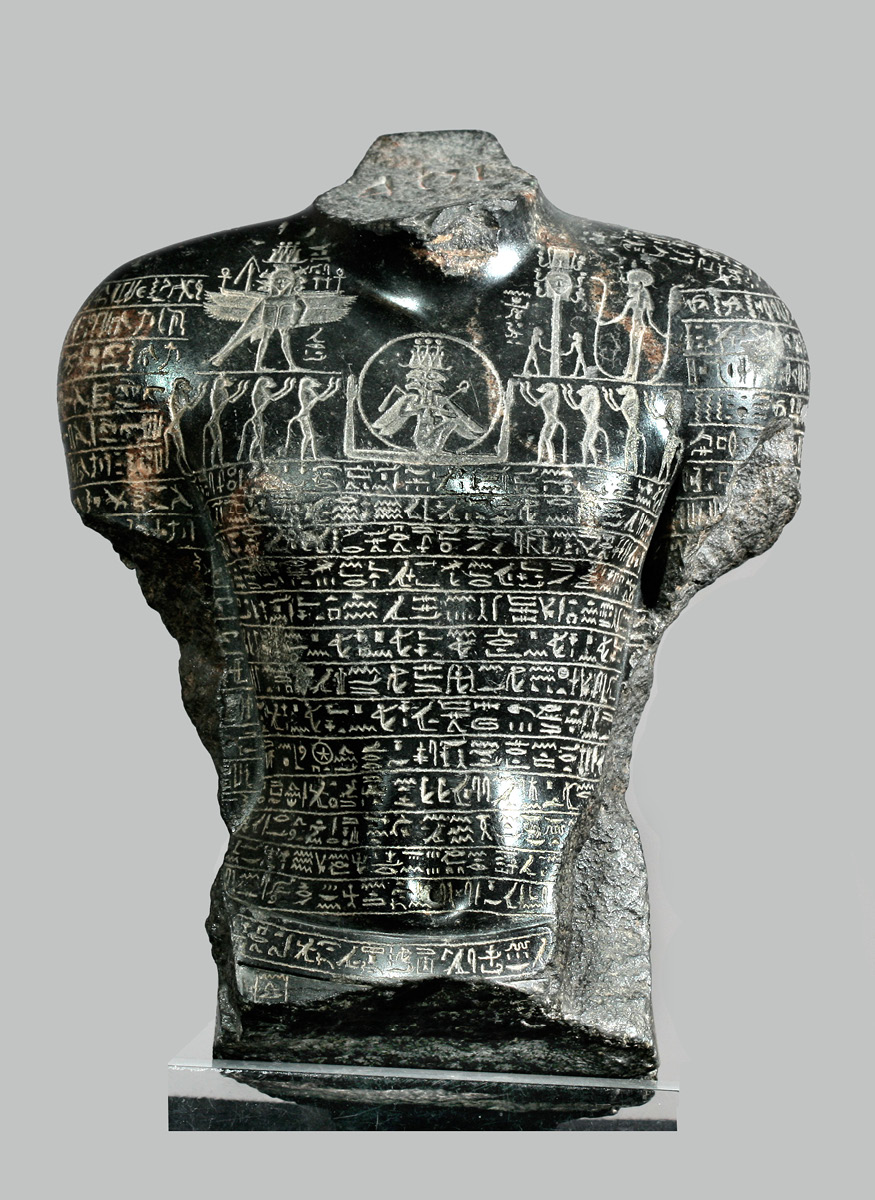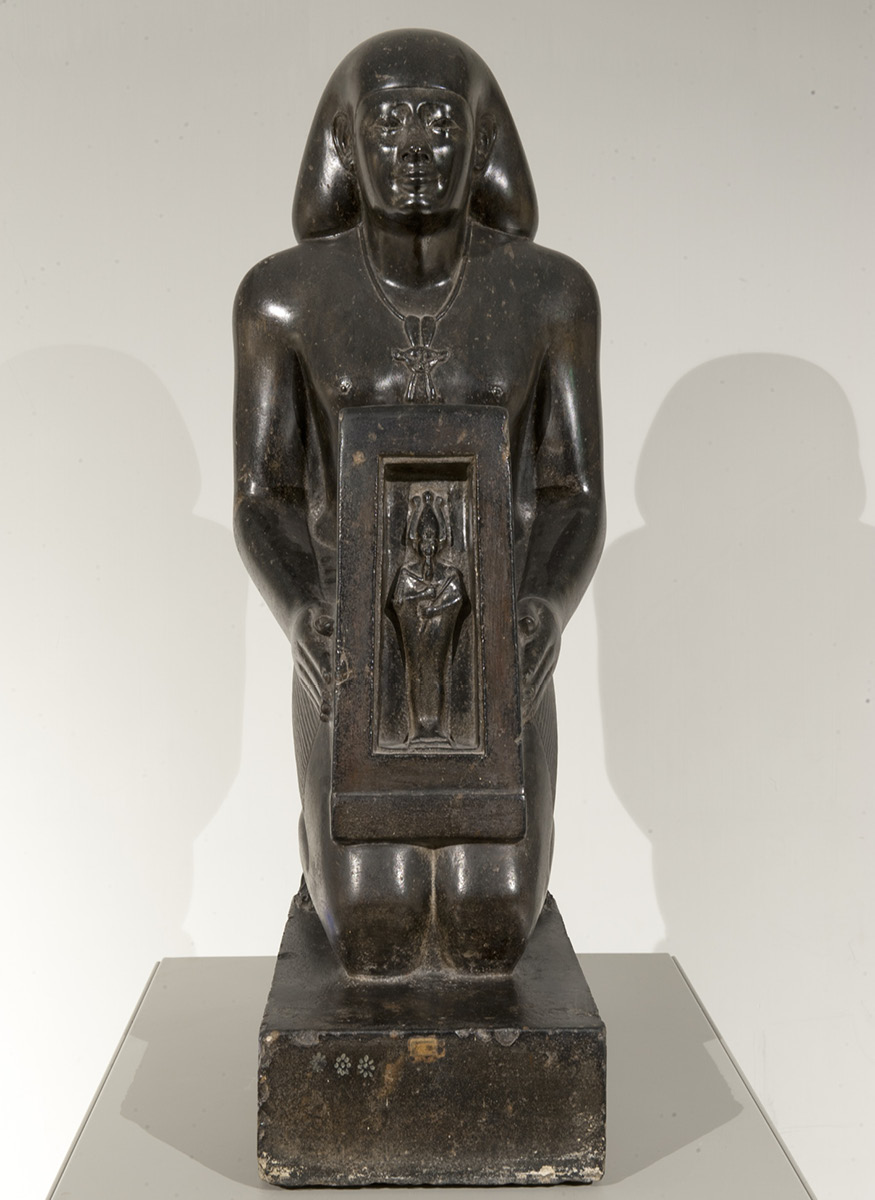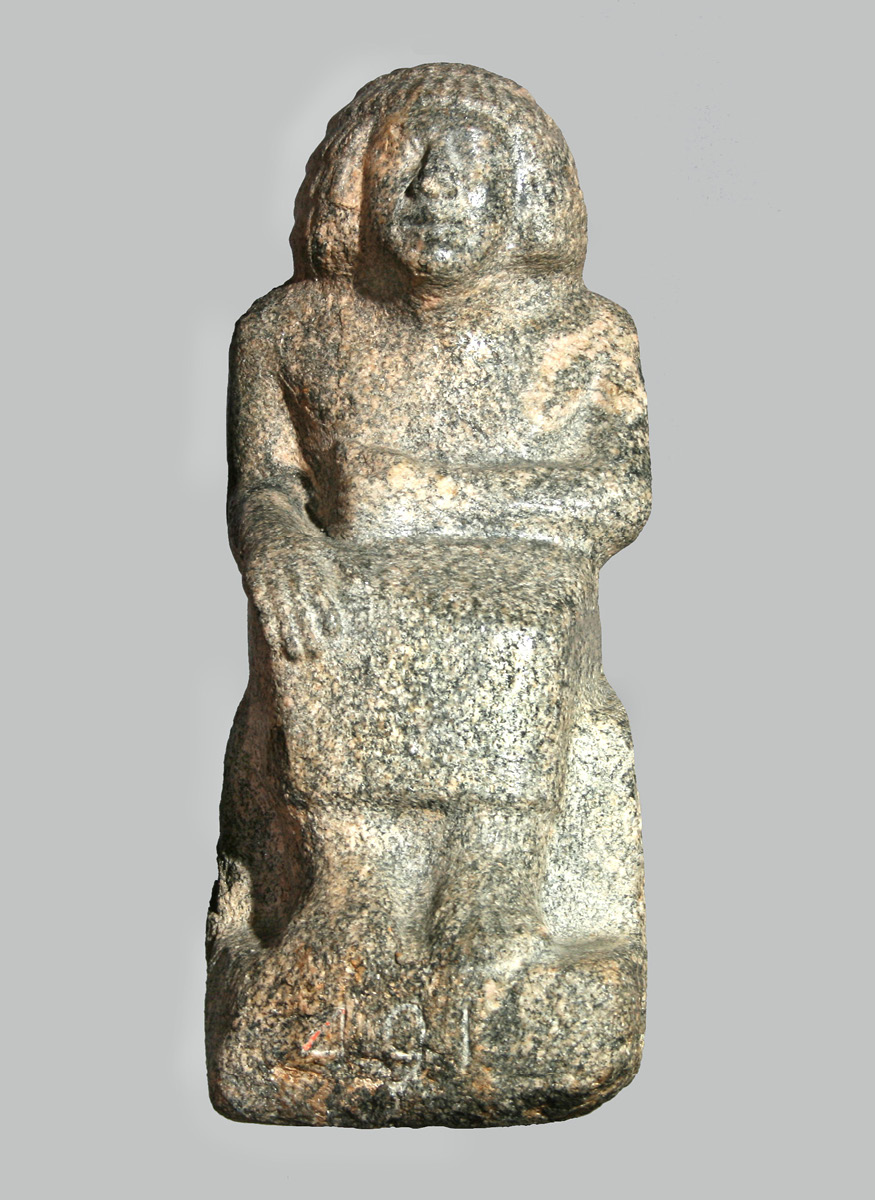Egyptian Collection
The Egyptian collection of the Museum is only second to the Egyptian Museum of Turin in Italy, in terms of the importance of the antiquities on display. It was created between 1817 and 1821, relying on the acquisition of famous private collections (Borgia, Drosso-Picchianti, Hogg and Schnars), as well as on the excavations promoted by the Bourbon family in the Phlegrean and the Vesuvian area. The Farnese collection is present with one extraordinary single piece, the Naophorous, a statue portraying a kneeling character, holding in his hands a naòs, in which is a figure of the God Osiris.
The new display project, spanning across seven rooms (XVII to XXIII – 17 to 23), is organized in five sections, each dedicated to one important aspect of the Egyptian civilization: the sphere of power, the world of the dead, the cults and the magic, the socio-economic organization. The first rooms of the gallery introduce visitors to both the “History of the collection”, with 18th century’s casts of Egyptian monuments, and to the phenomenon of “Collecting Egyptian antiquities”, with an evocative reproduction of the first ever Egyptian gallery set-up of the museum, dating to the 18th and 19th centuries. “The pharao and the men” is the title of room XIX (19), where almost all the sculptures portray pharaos, civil and military officials, scribes and priests (the so-called “Dama di Napoli” of the Old kingdom, the statue of the butler Nakt of the Middle kingdom, the monument of Amenemone of the New kingdom, the portrait-statues of the Late Period). Some other relics, on the other hand, reflects the evolution of the structures of political power and society in different periods of the millennial Egyptian history. The next two sections dedicated to “The tomb and the grave goods” and to “The mummification” are focused on the funerary sphere, which develops very peculiar contents and shapes in the Egyptian civilization. Room XX (20) offers a description of the burial methods and of the “book of the dead”, displaying stelas (such as the one belonging to Hat and Amenhotep), painted and inscribed reliefs and a large series of shabtis (typical little figures representing servants carrying out various daily tasks on behalf of the dead, found in the most eminent tombs), together with containers and ornaments, which are typical grave goods items.
Room XXII (21) hosts some examples of human mummies (in sarcophagi made of wood or other materials, completed with the cartonnage and the amulets), beetle-shaped seals and the typical canopic jars. Room XXII (22) emphasizes the role of “Religion and the magic”, exhibiting the figures of the main deities of the large Egyptian pantheon, such as stone and bronze statuettes, with amulets and decorative items, three mummies of the crocodile god Sobek, and further references to temples, mythologies, religious syncretism and magic beliefs. Room XXIII (23), the last room of the gallery, entitled “Writing, arts and crafts” explores the language and the hieroglyphics, the culture and the organization of work, focusing on the most common jobs (such as the scribes and the sculptors), also highlighting the dense network of exchanges which took place in the Mediterranean, between Egypt and the other ancient civilizations, dating from the 9th century BC up to the Roman period. Bibliography Civiltà dell’Antico Egitto in Campania 1983 Collezione egiziana 1989 De Caro 1994 De Caro 1999 Collezione egiziana 2000 Guida alla collezione egiziana del MANN 2016
